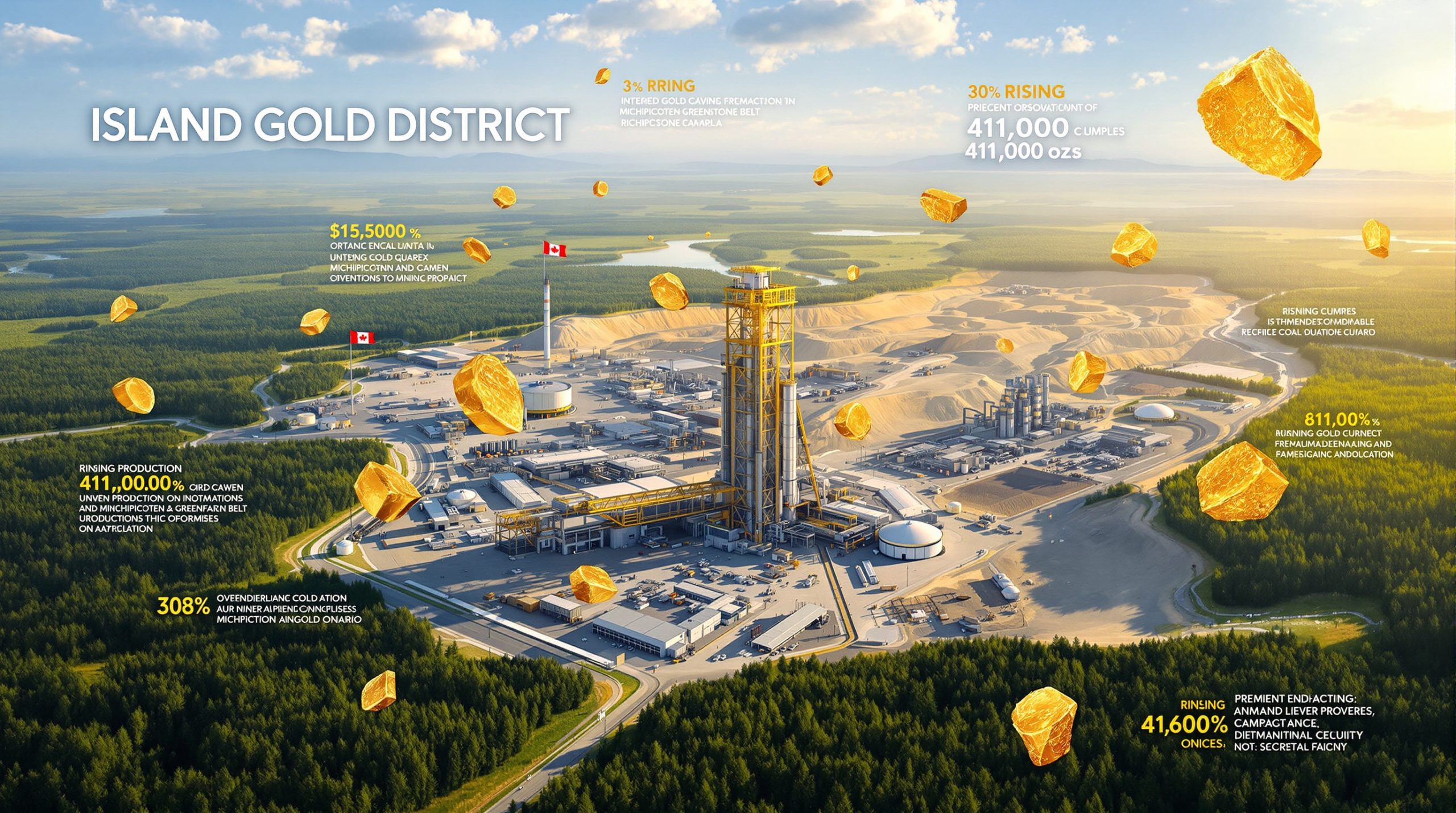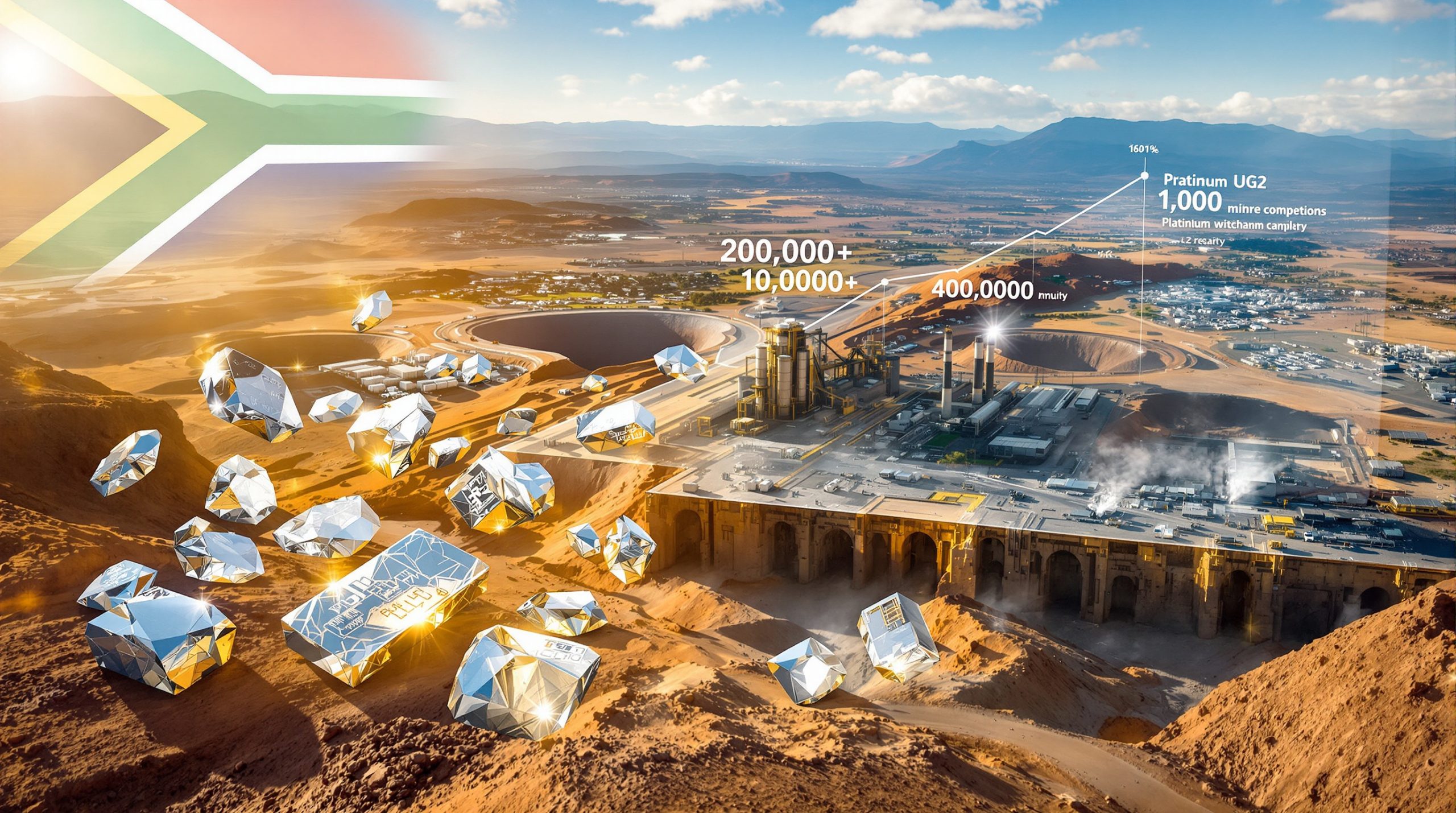How Does Heap-Leach Technology Transform Rare-Earth Mining?
Heap-leach technology represents a revolutionary approach to rare-earth element (REE) extraction, offering significant advantages over conventional processing methods that have dominated the industry for decades. This innovative technique involves stacking crushed ore on lined pads and applying specialized leaching solutions that selectively dissolve target minerals, dramatically reducing both capital requirements and operational complexity.
Unlike traditional rare-earth processing that relies on energy-intensive steps such as roasting, flotation, and complex chemical treatments, heap leaching streamlines the extraction process through direct chemical dissolution. The method has been widely adopted in copper, gold, and uranium mining but is only now being applied to rare-earth extraction at commercial scale.
The Dubbo Project in New South Wales, Australia, stands at the forefront of this technological shift, potentially reshaping global supply chains for these critical minerals energy transition by demonstrating the viability of heap leaching for rare-earth production.
What Makes the Dubbo Project Strategically Important?
Strategic Location and Resource Potential
The Dubbo Project, situated near Toongi in New South Wales, Australia, hosts an impressive 42.81-million-tonne measured mineral resource with a projected 42-year mine life. This massive deposit positions it as one of the most significant non-Chinese rare-earth developments globally, offering a crucial alternative supply source in a market currently dominated by Chinese production.
The project's location in Australia, a politically stable jurisdiction with strong mining traditions, adds to its strategic value. With growing concerns about critical minerals supply security, the Dubbo Project represents a rare opportunity to establish a substantial, long-term supply of rare earths outside China's sphere of influence.
Critical Materials Production Profile
The project's initial phase focuses on producing high-value separated rare-earth oxides essential for permanent magnets and advanced technologies. These materials serve as the foundation for the clean energy transition and modern defense systems:
| Rare-Earth Oxide | Average Annual Production (Years 3-15) |
|---|---|
| Neodymium/Praseodymium (NdPr) | 1,157 tonnes |
| Dysprosium (Dy) | 72 tonnes |
| Terbium (Tb) | 13 tonnes |
To put these figures in context, these production volumes would represent a significant portion of non-Chinese supply. Neodymium and praseodymium are vital components in powerful permanent magnets used in electric vehicles and wind turbines, while dysprosium and terbium enhance magnet performance at high temperatures—critical for automotive and industrial applications.
Industry experts note that the projected dysprosium and terbium outputs are particularly significant, as these heavy rare earths face the most severe supply constraints globally.
How Does Heap-Leach Processing Work at Dubbo?
Innovative Processing Methodology
The Dubbo Project's heap-leach approach represents a significant departure from conventional rare-earth processing, utilizing a sequence of steps specifically tailored to the unique mineralogy of the deposit:
-
Ore Preparation: Raw ore is crushed to achieve optimal particle size (typically between 6-25mm) for maximum surface area exposure while maintaining permeability within the heap
-
Heap Construction: Crushed material is stacked on specially designed lined pads in carefully engineered lifts to ensure structural stability and optimal solution flow
-
Leaching Process: Hydrochloric acid solutions are applied through drip irrigation systems, with acid concentration and application rates precisely controlled to maximize dissolution of target rare earths
-
Solution Collection: Pregnant leach solutions containing dissolved rare earths are collected via a network of drainage pipes beneath the heap and directed to processing circuits
-
Purification and Separation: In-house technologies separate individual rare-earth elements through a combination of solvent extraction and selective precipitation steps
-
Final Production: High-purity rare-earth oxides meeting stringent specifications for magnet manufacturing and other applications are produced for market
This methodology eliminates energy-intensive steps like roasting and flotation that characterize traditional processing routes, resulting in both cost savings and environmental benefits. The elimination of high-temperature processes significantly reduces energy consumption, while the targeted leaching approach minimizes chemical usage.
Recovery Efficiency Breakthroughs
Extensive metallurgical testing conducted over several years has demonstrated impressive recovery rates for key rare-earth elements through the heap-leach process at Dubbo:
- Neodymium: Up to 80% recovery
- Praseodymium: Up to 85% recovery
- Terbium: Up to 44% recovery
- Dysprosium: Up to 38% recovery
These recovery rates validate the technical viability of the heap-leach approach for the specific mineralogy at Dubbo. While heavy rare earth recoveries (terbium and dysprosium) are lower than light rare earths (neodymium and praseodymium), the economics remain compelling due to the significantly higher value of these elements.
Metallurgical optimization work continues to improve these recovery rates, with particular focus on enhancing heavy rare earth dissolution through modified leaching parameters and targeted additives.
What Economic Advantages Does Heap-Leach Offer?
Capital Expenditure Reduction
The heap-leach development pathway dramatically reduces the project's initial capital requirements compared to conventional processing approaches:
| Development Approach | Estimated Capital Expenditure |
|---|---|
| Heap-Leach Method | A$740 million |
| Traditional Processing (2021 Study) | A$1.68 billion |
| Capital Reduction | ~56% |
This substantial reduction in upfront investment significantly improves the project's financial viability and attractiveness to investors. The capital savings derive primarily from:
- Elimination of complex crushing and grinding circuits
- Avoidance of high-temperature processing equipment
- Simplified materials handling systems
- Reduced footprint for processing facilities
- Lower infrastructure requirements
For rare-earth projects, which have historically struggled with high capital intensity and financing challenges, this capital reduction represents a potential game-changer for development feasibility.
Operating Cost Competitiveness
The simplified processing route is projected to position Dubbo among the lowest-cost rare-earth producers outside China. This cost advantage stems from multiple factors:
- Elimination of energy-intensive processing steps, resulting in lower power consumption
- Reduced chemical consumption through more targeted leaching
- Lower equipment maintenance requirements due to simplified flowsheet
- Decreased labor requirements from streamlined operations
- Simplified operational complexity reducing management overhead
Industry analysts note that operating cost competitiveness is particularly crucial in the volatile rare-earth market, where price fluctuations can rapidly erode profitability for higher-cost producers. The Dubbo Project's cost structure enhances its resilience against market downturns while positioning it to capture strong margins during favorable price environments.
What Are the Financial Projections for the Project?
Economic Assessment
Financial modeling demonstrates compelling economics under multiple price scenarios, reflecting the project's potential to deliver strong returns on investment:
| Economic Indicator | Base Case | Elevated Price Case |
|---|---|---|
| Net Present Value (8% discount) | A$967 million | A$1.468 billion |
| Internal Rate of Return | 18.3% | 22.9% |
| Payback Period | 5.8 years | 4.3 years |
These projections reflect the project's potential to deliver strong returns on investment while providing a critical non-Chinese supply source for rare-earth elements. The base case assumes conservative long-term pricing for rare-earth oxides, while the elevated case incorporates more optimistic but still historically justified price assumptions.
The financial model incorporates detailed capital and operating cost estimates developed through engineering studies and industry benchmarking. Revenue projections consider production ramp-up periods and market absorption capacity for the targeted rare-earth products.
Disclaimer: These financial projections are based on current market assumptions and technical parameters. Actual project performance may vary based on market conditions, operational efficiency, and other factors. Investors should conduct their own due diligence before making investment decisions.
How Does Dubbo Fit Into Global Supply Chains?
Integration with Downstream Processing
The Dubbo Project forms a key component in Australian Strategic Materials' (ASM) comprehensive "mine-to-metals" strategy. This integrated approach extends beyond simple ore extraction to encompass the entire value chain:
-
Resource Extraction: Mining and initial processing at the Dubbo site to produce mixed rare-earth concentrates
-
Rare-Earth Separation: Production of high-purity individual rare-earth oxides through advanced separation technologies
-
Metallization: Conversion of oxides to metals at ASM's facilities in South Korea, utilizing proprietary metal-making technology
-
Market Distribution: Supply of metals and alloys to global technology manufacturers for use in magnets, electronics, and other applications
This vertical integration strategy enhances supply chain security and captures additional value beyond raw material production. By controlling multiple stages of the value chain, ASM aims to reduce overall product costs while ensuring consistent quality and reliability.
The South Korean metallization facility represents a strategic partnership that bridges production in Australia with technology manufacturing in Asia, creating a robust alternative to Chinese-dominated supply chains.
Supply Chain Diversification Impact
The development of Dubbo represents a significant step toward diversifying global rare-earth supply chains:
- Reduces dependence on Chinese-controlled sources, which currently account for approximately 85% of global rare-earth oxide production
- Establishes Australia as a key supplier of critical rare earths, building on its existing strength in mineral resources
- Provides supply security for industries in allied nations concerned about geopolitical supply risks
- Creates a more resilient global supply network for these strategic materials
This diversification addresses growing concerns about supply concentration and geopolitical vulnerabilities in critical mineral supply chains. Recent policy initiatives in the United States, European Union, Japan, and other advanced economies have specifically targeted rare-earth supply security as a strategic priority, creating favorable market conditions for new non-Chinese suppliers.
What Is the Development Timeline and Current Status?
Project Advancement Schedule
The Dubbo Project is progressing through a structured development pathway designed to minimize risk while advancing toward production:
-
Prefeasibility Study: Targeted for completion in Q1 2026, incorporating detailed engineering design, cost estimates, and optimization of the heap-leach process
-
Engineering and Design: Front-end engineering design (FEED) to follow PFS completion, with detailed specifications for all major equipment and systems
-
Construction Phase: Expected to span approximately 30 months, with site preparation, infrastructure development, and processing facility construction
-
Production Ramp-up: Phased approach focusing initially on rare-earth oxides, with gradual increase to nameplate capacity
This timeline reflects a methodical approach to de-risking the project while advancing toward production. The schedule incorporates appropriate contingencies for regulatory approvals, procurement lead times, and commissioning activities.
Key Development Partnerships
ASM has established strategic partnerships to support the project's advancement, bringing world-class expertise to key aspects of development:
- DRA Pacific: Providing preliminary engineering and cost estimates, drawing on extensive experience in mineral processing projects
- Bechtel Mining and Metals: Engaged for front-end engineering design, leveraging global expertise in complex mining developments
- ANSTO: Collaborating on pilot plant development and testing, utilizing Australia's premier nuclear science and technology organization
These partnerships bring world-class expertise to the project, enhancing its technical foundation and development pathway. The involvement of established industry leaders provides additional confidence in the project's technical feasibility and execution strategy.
What Environmental and Sustainability Considerations Apply?
Resource Efficiency Improvements
The heap-leach approach offers several environmental advantages compared to conventional processing methods commonly used for rare-earth extraction:
-
Reduced Energy Consumption: Elimination of high-temperature processing steps significantly decreases energy requirements, with an estimated 40-60% reduction in overall energy intensity compared to conventional methods
-
Lower Water Usage: Closed-loop solution management systems minimize freshwater consumption, with up to 85% of process water recycled within the operation
-
Decreased Chemical Consumption: More targeted extraction chemistry reduces overall reagent usage, minimizing the environmental footprint of chemical manufacturing and transportation
-
Smaller Physical Footprint: Simplified processing facilities require less land disturbance than conventional plants, reducing habitat impact and mine reclamation innovations requirements
These efficiency improvements contribute to a more sustainable operational profile for the project, aligning with growing expectations for environmental responsibility in mining operations.
Waste Management Strategy
The project incorporates advanced waste management practices designed to minimize environmental impacts throughout the mine life and after closure:
-
Spent Heap Management: After leaching, heaps undergo neutralization and stabilization to prevent acid generation, with encapsulation systems to isolate any potentially reactive materials
-
Water Circuit Design: Comprehensive water management systems capture and treat all contact water, with continuous monitoring to ensure compliance with discharge standards
-
Progressive Rehabilitation: Concurrent reclamation of disturbed areas as operations advance, minimizing the active footprint and accelerating ecosystem restoration
-
Monitoring Programs: Extensive environmental monitoring throughout operations and post-closure, with data transparency and regular reporting to regulatory authorities and community stakeholders
These measures address potential environmental impacts while supporting the project's social license to operate. The heap-leach approach, while not without environmental considerations, offers significant mining sustainability transformation advantages compared to conventional rare-earth processing when properly managed.
How Does Dubbo Impact the Global Rare-Earth Market?
Market Positioning
The Dubbo Project is positioned to become a significant player in specific segments of the rare-earth market where supply constraints are most acute:
-
Heavy Rare Earths: Notable production of dysprosium and terbium, which face severe supply constraints due to limited primary production sources outside China
-
Magnet Materials: Substantial production of neodymium and praseodymium for permanent magnets, addressing the fastest-growing segment of rare-earth demand
-
Non-Chinese Supply: One of few advanced projects outside China capable of producing separated rare-earth oxides, addressing growing concerns about supply concentration
This market positioning addresses critical supply gaps in the global rare-earth value chain. While total production volumes represent a modest percentage of global supply, the project's focus on high-value, supply-constrained elements maximizes its strategic and economic impact.
Strategic Value Beyond Production Volumes
While Dubbo's production volumes represent a modest percentage of global rare-earth supply, its strategic value extends far beyond raw tonnage:
-
Supply Diversification: Reduces market concentration and geopolitical risk by establishing a significant non-Chinese source of critical rare earths
-
Technology Demonstration: Validates alternative processing routes for rare-earth extraction, potentially paving the way for additional projects using similar approaches
-
Industry Development: Catalyzes downstream processing and manufacturing capabilities in Australia and partner countries, strengthening overall supply chain resilience
-
National Security: Enhances resource security for defense and critical technology applications in allied nations concerned about supply vulnerabilities
These strategic benefits amplify the project's importance beyond its direct economic contribution. Government policies increasingly recognize rare-earth supply security as a national priority, creating a supportive environment for projects like Dubbo that advance strategic objectives beyond simple commercial returns.
What Challenges and Opportunities Lie Ahead?
Development Hurdles
Despite its promising outlook, the Dubbo Project faces several challenges that must be addressed for successful implementation:
-
Technical Optimization: Continued refinement of heap-leach parameters for maximum recovery, particularly for heavy rare earths where recovery rates remain lower than light rare earths
-
Market Development: Establishing offtake agreements and customer relationships in a market historically dominated by Chinese suppliers with established customer networks
-
Financing Structure: Securing optimal funding mix for project development, potentially including strategic investors, government support, and traditional project finance
-
Regulatory Navigation: Managing permitting and compliance requirements in an increasingly complex regulatory environment for mining and processing operations
Addressing these challenges requires strategic planning and stakeholder engagement. The project team's approach involves systematic risk identification and mitigation strategies for each area, with particular emphasis on technical de-risking through continued metallurgical testing and process optimization.
Future Expansion Potential
The initial heap-leach development creates a foundation for potential future expansion across multiple dimensions:
-
Production Scale-up: Increasing throughput beyond the initial one-million-tonne annual processing rate, potentially doubling capacity in subsequent development phases
-
Product Diversification: Expanding into additional rare earths and critical minerals present in the deposit, including zirconium, hafnium, and niobium, which represent substantial additional value
-
Value-Added Processing: Developing additional downstream capabilities within Australia, potentially including magnet manufacturing to capture higher margins
-
Technology Transfer: Applying lessons learned to other rare-earth resources globally, creating opportunities for technical consulting and partnership arrangements
These expansion pathways offer significant growth potential beyond the initial development phase. The modular nature of heap-leach operations facilitates phased expansion with lower incremental capital requirements than conventional processing facilities, enhancing flexibility to respond to market conditions and industry evolution trends.
FAQ: Dubbo Project Heap-Leach Development
What makes heap-leach processing different from conventional rare-earth extraction?
Heap-leach processing eliminates energy-intensive steps like roasting and flotation, instead using direct acid leaching of crushed ore stacked in heaps. This approach significantly reduces capital costs, simplifies operations, and potentially lowers environmental impacts compared to conventional processing methods. The technique has been widely used in copper and gold mining for decades but represents a novel application for rare-earth extraction at commercial scale.
How does the Dubbo Project contribute to rare-earth supply security?
As one of the most advanced rare-earth projects outside China, Dubbo provides supply diversification for critical elements used in clean energy, electronics, and defense applications. Its development reduces dependence on Chinese-controlled supply chains and enhances resource security for Western nations. The project's focus on heavy rare earths like dysprosium and terbium addresses the most severe supply constraints in the rare-earth market.
What factors influence the economic viability of the heap-leach approach?
Key factors include recovery rates for target elements, acid consumption rates, leaching cycle times, and processing costs for downstream separation. The Dubbo Project's metallurgical testing has demonstrated favorable performance across these parameters, supporting the economic case for heap leaching. Ongoing optimization work continues to improve these factors, with particular focus on enhancing recovery rates for higher-value heavy rare earths.
How does the project address environmental concerns associated with rare-earth processing?
The heap-leach approach eliminates several environmentally challenging processes found in conventional rare-earth extraction, including high-temperature roasting and intensive chemical processing. The project incorporates comprehensive waste management strategies, water conservation measures, and progressive rehabilitation practices to minimize environmental impacts. Advanced monitoring systems ensure regulatory compliance and provide transparency to stakeholders.
Further Exploration
Readers interested in learning more about rare earth mining developments in Australia can also explore related educational content available from Mining Weekly, which offers perspectives on various mining projects and technological developments in the resources sector.
The Dubbo Project represents a significant innovation in rare-earth processing technology with potential implications extending far beyond a single mining operation. Its development could signal a new approach to rare-earth extraction that addresses both economic and environmental challenges that have historically limited industry growth outside China.
Searching for the Next Big Mining Investment Opportunity?
Discover how to gain an edge in ASX mineral discoveries with Discovery Alert's proprietary Discovery IQ model, which instantly transforms complex announcements into actionable investment insights. Explore why historic discoveries can generate substantial returns by visiting Discovery Alert's dedicated discoveries page and begin your 30-day free trial today.




